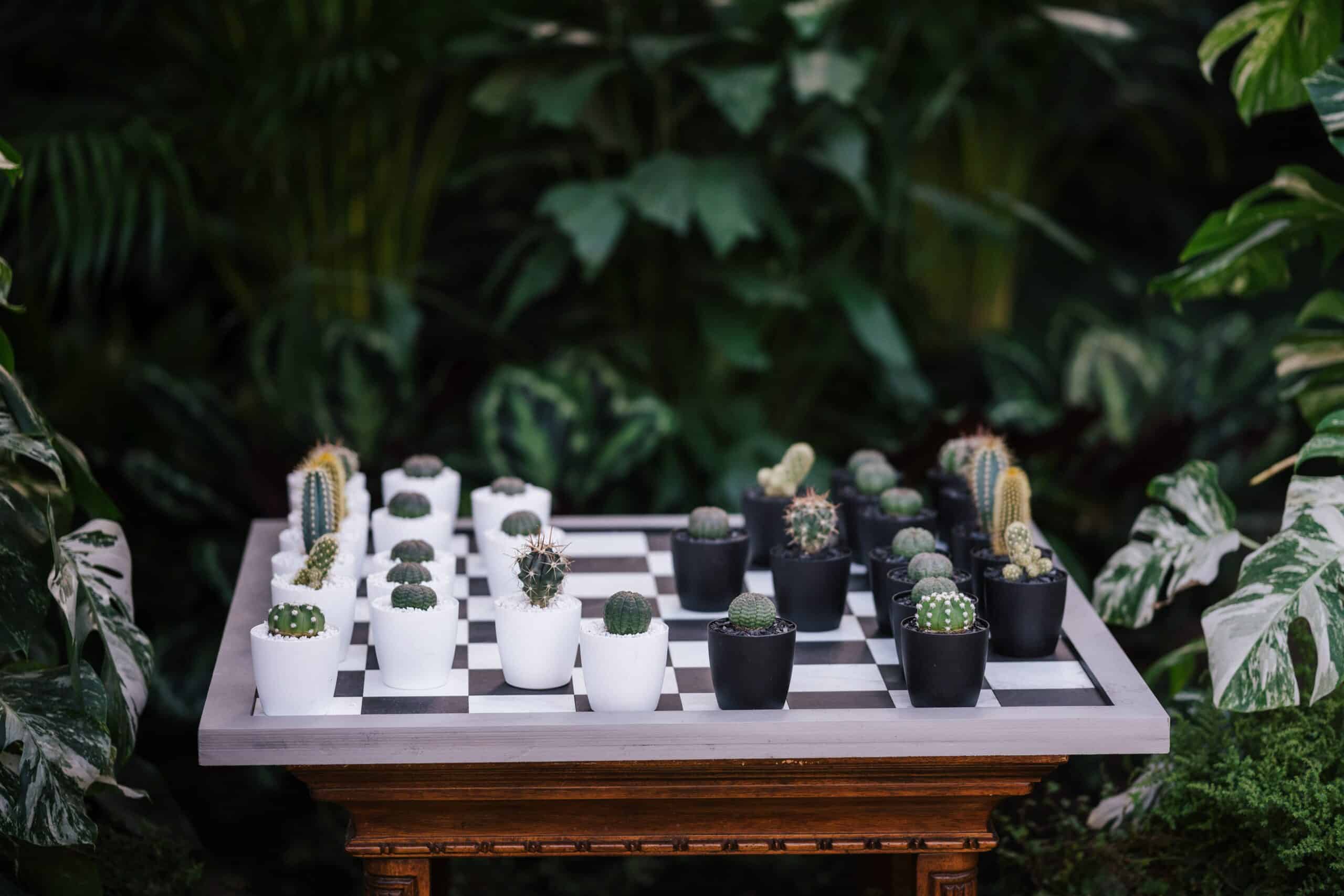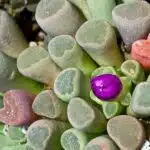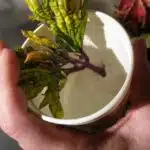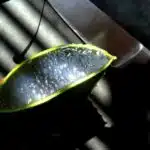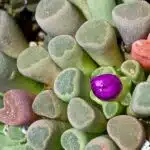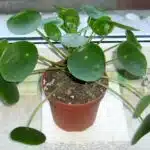Propagating succulents is one of the most satisfying and rewarding activities for gardeners of all levels. Not only does it help you to expand your collection of plants, but it also allows you to enjoy a beautiful addition to your garden. With just four simple steps, propagating succulents can be an easy and enjoyable task.
One gardener in particular, Helen G., found great success when propagating her succulent collection. After following the simple steps, she was able to propagate several succulents within a few weeks. She noted that it was not only a fun activity but also a very economical one since she was able to save money by not having to buy new plants.
Now, whether you are an experienced or novice gardener, propagating succulents is something that anyone can do with ease. Read on to discover how easy it is to propagate your own succulent collection in just four simple steps!
What You Need To Propagate Succulents
It’s easy to think that propagating succulents is a difficult process, but in reality it can be surprisingly simple. With just a few key items, you can learn how to propagate succulents with minimal effort and experience the satisfaction of seeing your plants flourish. Let’s take a look at what materials you’ll need for success.
First and foremost, you need succulents that are healthy and strong so they can survive the propagation process. If they’re too weak or damaged, it may be challenging for them to make it through the transition. To find the best candidates for propagation, look for plants with thick leaves that have begun to sprout new growth. These will give you the best chance of success when propagating your succulents.
The other items you’ll need are some scissors or shears if you’re cutting from a larger plant, rooting hormone (optional), potting soil, and containers for planting. With these few items in hand, you’re on your way to propagating your own succulents! Now let’s look at how to choose the perfect plants for successful propagation.
How To Choose Succulents For Propagation
Harnessing the power of propagation, you can create a mini-garden of emerald greens and petite succulents. It’s an easy task that requires little effort but yields abundant rewards. To begin, you must know how to choose the right succulents for propagation.
First, determine the type of succulent you have in your garden – is it a leaf-dropping variety or stem-rooting type? Leaf-dropping types such as echeveria are among the easiest to propagate and stem-rooting species like sedums require a bit more patience and skill. Also, take note if there are any signs of disease on the plant like discoloration or wilting leaves. This could be a sign that it’s not healthy enough to propagate successfully.
Next, pick out healthy stems with intact leaves or with new growth emerging from the base near the soil. When cutting them off, use a sharp pair of scissors and make sure to leave at least two inches of stem on each cutting. Additionally, keep in mind that certain varieties need time for their wounds to heal before they can be planted in soil so don’t forget to factor this into your timeline when propagating succulents at home.
Now that you’ve selected your cuttings, it’s time to prepare them for planting.
Preparing Succulent Cuttings
Propagating succulents is like a science experiment – you never know what will happen! In the third step of this process, it’s time to prepare the succulent cuttings. This involves taking small pieces from the succulent of your choice and making sure they have enough of their own root structure to sustain themselves. First, you’ll need to take scissors or a sharp knife and cut off a few pieces from the main plant. Now, it’s important to make sure that each cutting has at least two leaves on it; this will give it a higher chance of successfully propagating.
Next, you’ll want to let your cuttings sit for a few days in order to allow their wounds to heal and callus over. This ensures that no bacteria or fungi will infect them when they are eventually planted. You can do this by placing them in indirect sunlight in an open container with some air circulation. If you’d like, you can also place them in rooting hormone powder or gel before planting them – this helps speed up the process!
After the succulent cuttings are ready, it’s time to take rooting hormone and plant them in soil or water. Make sure that the soil is well-draining and aerated so that there won’t be any standing water around the plant. Once everything is set up correctly, all you have to do is wait for your succulents to start growing roots! With patience and care, soon enough you’ll have more beautiful plants than ever before.
Taking Rooting Hormone And Planting Succulent Cuttings
Planting and prepping potent pieces of succulents is the fourth and final step of propagating these plants. Preparing your cuttings with the proper rooting hormone, potting soil, and planter will ensure your cuttings take root and thrive.
Before planting your succulent cuttings in a planter, you need to prepare them by dipping them in rooting hormone. This will give them the best chance to form their own roots. You can find rooting hormone at any local garden center or online store. Make sure to follow the instructions on the bottle when using it.
After you’ve dipped your succulent cuttings in rooting hormone, it’s time to plant them in a pot filled with potting soil. Fill your pot with high-quality well-draining soil for succulents and cacti that contains perlite or pumice for better drainage. Then, dig a small hole in the soil and place your succulent cutting into it before lightly pressing down on the soil around it to secure it in place. With this last step complete, you are now ready to choose where to place your newly propagated succulent cuttings!
Choosing Where To Plant Succulent Cuttings
Choosing where to plant succulent cuttings is perhaps the most exciting and thrilling step of propagating succulents! There’s nothing quite like taking a cutting and imagining what this new little plant will look like in its new home. But choosing the right spot is key to making sure your succulent gets all the sunlight, water, and nutrients it needs to thrive.
When selecting a location for planting your succulent cuttings, consider factors such as light and air circulation. Make sure the area has enough bright light but isn’t too hot or exposed to intense sunlight during midday. Also, make sure that it’s not too windy as this can lead to dehydration and other problems. Finally, make sure you have good soil drainage so that your succulent doesn’t get root rot from excess moisture.
Once you’ve identified the perfect spot for your succulent cuttings, it’s time to get started with planting them! With just a few more steps you’ll soon have a thriving garden of beautiful plants!
Watering Succulent Cuttings
What’s the best way to keep your succulent cuttings hydrated? Watering succulent cuttings is an essential step in the propagation process. So, how do you ensure that your cuttings get the water they need?
First, it’s important to recognize when your succulents need to be watered. Cuttings should be watered only when their soil has completely dried out. To test this, stick a finger into the soil – if it feels dry, then you know it’s time to water. When watering, use a spray bottle and lightly mist the leaves and soil of each cutting; avoid overwatering as too much can cause root rot or mildew.
It’s also important to monitor soil moisture levels for each cutting; succulents can easily become over-watered if not managed properly. To help with this, consider using a moisture meter to check if your cuttings need additional water or not. Taking these precautions will help ensure that your succulent cuttings stay healthy and hydrated while they establish new roots and branches.
Now that you know how to properly water your succulent cuttings, you’ll want to make sure that they receive proper care as they continue to grow and develop.
Caring For Succulent Cuttings
The seventh step in propagating succulents is caring for the cuttings. This involves providing the right environment and amount of light, so they can establish a good root system. It’s important to make sure that the cuttings are kept moist, but not overly wet. Place them in an area with moderate temperatures, and make sure there’s enough air circulation around them.
To keep the succulent cuttings healthy, it’s also crucial to give them the correct nutrients. A weak solution of fertilizer should be added every two weeks or so. If you’re using a potting soil mix, add some extra perlite and pumice to increase drainage and aeration. Finally, trim any dead leaves or wilted stems to help encourage growth.
Now that you know how to care for your succulent cuttings, it’s time to find out when it’s best to transplant them into their permanent home.
When To Transplant Succulent Cuttings
Did you know that more than 8,000 species of succulents exist? It’s no wonder why these resilient and beautiful plants are so popular! To spread your succulent love and propagate these plants, here’s a guide on when to transplant succulent cuttings.
Transplanting succulent cuttings is an important step when propagating your plants. In general, most succulents should be transplanted within two weeks of taking the cutting. When it’s time to transplant the cutting, choose a pot with drainage holes that is slightly bigger than the original pot. Make sure to fill the new pot with a well-draining soil mix for cacti and succulents. After filling the pot with your soil, place the cutting in and backfill with more soil.
Give your cutting plenty of indirect sunlight – this will help stimulate root growth. Succulents can take up to three months before they’re established enough to move out of their pots, so keep checking on them regularly! With these few steps, you’ll be able to successfully transplant your succulent cuttings in no time. Now that you’ve learned how to transplant them, let’s look at some troubleshooting tips for propagating succulents!
Troubleshooting Tips For Propagating Succulents
Propagating succulents can be tricky, but with a few helpful tips, it’s possible to make the process simpler. Starting off with some alliteration for added effect, cultivating cuttings can be complicated and complex. To ensure success in this endeavor, troubleshooting is a key component of the propagation process.
In order to troubleshoot potential issues with propagating succulents, first consider the environment surrounding the plant. Is there adequate sunlight and water? If not, these two factors may be hindering successful growth and should be addressed. Additionally, if the soil is too compacted or doesn’t drain properly, air pockets may form which will prevent propagation from occurring quickly or at all.
Furthermore, take note of the quality of your cutting tools and how you’re handling them when taking cuttings from existing plants. Dull blades may not work well for this task and can cause harm to both you and your plants so it’s important to keep them clean and sharpened for optimal performance. Also remember that when handling your succulents during propagation, do so gently as they are delicate plants and mishandling them can result in stunted growth or even death of the plant.
By following these tips on troubleshooting while propagating succulents, you’ll have a much better chance of achieving success with your project. With proper attention given to environmental factors and careful handling techniques applied throughout the process, you’ll soon find yourself flourishing with fresh new progressions of these beautiful plants!
Propagating Succulents From Leaves
Like a phoenix from its ashes, propagating succulents from leaves is an excellent way to rebirth your favorite plants. With just a few simple steps, you can create a fresh start for your beloved succulents. To help you bring these plants back to life, let’s discuss how to propagate succulents from leaves.
First and foremost, you’ll need to prepare the leaves for their new potting. Carefully remove any existing soil or debris from the leaves and then use scissors or clippers to cut off any roots that have grown on them. After this process is complete, it’s time to get ready for planting. Place the leaves in a shallow bowl filled with soil and cover them with a damp cloth until they start sprouting new growth. This can take anywhere from several weeks to months depending on the species of plant you are trying to propagate.
Finally, once the new growth starts appearing on your leaves, it’s time to move them into individual pots or planters. Make sure each pot has adequate drainage holes so that excess water can escape. Additionally, keep in mind that some species of succulents may require more light than others during this process of propagation – so make sure you choose the right spot for them! With proper care and attention, you can soon enjoy watching your succulent family grow and thrive once again!
Propagating Succulents From Seeds
Propagating succulents from seeds is a relatively straightforward process that can be undertaken at home. For example, if you have an easy-to-grow variety of succulent, such as an echeveria, you can start propagating it from the comfort of your own home. All you need to get started are some healthy succulent leaves or cuttings and some potting soil.
The first step in propagating succulents from seeds is to gather the necessary materials. This includes a pot with drainage holes and good quality potting soil. You will also need to collect some viable seeds from existing plants or purchase them online or from a garden center. Once everything has been gathered, it’s time to begin the propagation process.
Next, prepare the soil by adding water until it is damp but not wet. Place the seeds onto the surface of the soil and press down firmly so that they make contact with the soil beneath them. Cover them lightly with more soil and water gently again until moist but not soggy. After this step, all you need to do is place your potted plant in a warm area with indirect sunlight and keep it consistently moist until germination occurs; this usually takes several weeks depending on temperature and other environmental factors.
Propagating succulents from seeds may seem daunting at first but once you have acquired the necessary materials and understand how to properly care for them, you will likely find success in growing these beautiful plants! With patience and proper care, soon enough you’ll be rewarded with lush new growth!
Tips For Growing Succulents From Seeds
When it comes to propagating succulents from seeds, the process can seem intimidating. However, with the right tips, growing succulents from seeds doesn’t have to be a difficult task. Here are some helpful tips for making the most of your propagating experience.
First and foremost, make sure you get good quality seed that is fresh and has been properly stored. If you’re unsure about where to get your seed from, research reputable suppliers online or ask in local garden centres for advice. Also be sure to use soil that is well-drained and contains organic matter such as compost or peat moss. This will help ensure that your succulents get the proper nutrition they need in order to grow successfully.
Finally, give your succulents plenty of light and water them regularly. Make sure not to overwater them as this could lead to root rot or other issues that can damage the plants. When it comes time to harvest your succulent babies, be gentle and try not to disturb their roots too much – this will help ensure they don’t suffer any shock or trauma during transplanting. With these tips in mind, you’ll be on your way towards successful propagation of succulents from seeds!
With proper care and attention paid to each step of the process, propagating succulents from seeds can lead to beautiful results. However, there are still common problems that arise when attempting propagation – understanding how to successfully overcome these issues is key for achieving success with this plant-growing venture.
Common Problems With Propagating Succulents
When propagating succulents, it’s important to be aware of common problems that can emerge. For instance, if the leaves are too wet or exposed to direct sun, they can develop fungus and rot. Too little water can cause the leaves to shrivel and die. Additionally, a lack of proper drainage can result in root rot. It’s also important to make sure that any cutting tools used are sharp and disinfected. This will help prevent bacteria and fungi from spreading between plants.
Another common problem is not providing enough light for the succulent cuttings while they’re rooting. If the cutting is placed in an area with insufficient light, it won’t be able to photosynthesize and produce new growth. As a result, the cutting may become stunted or die off altogether. To avoid this issue, place cuttings in bright indirect sunlight or under artificial lighting sources such as LED lights or fluorescent bulbs.
Finally, when propagating succulents from stems, it’s important to make sure that stem pieces have at least two nodes intact for them to root successfully. Nodes are small bumps along the stem where leaves grow from; these are where the new roots will form from so having enough of them is essential for successful propagation!
Propagating Succulents From Stems
Propagating succulents from stems is an easy way to multiply your plant collection. It’s a great way to get the most out of your succulent garden, and it’s pretty straightforward. First, take a stem from an existing succulent and trim off the lowest leaves. These leaves will be used for propagation, so make sure they’re healthy and disease-free. Next, you’ll need to let the cut end of the stem dry for a few days. This gives it time to form a callus over the wound, which helps protect against infection from bacteria or fungi. Finally, you’ll be ready to pot up the leaf in soil or get creative with other planting mediums like sand or gravel. Propagation can help you create beautiful arrangements without spending extra money on new plants. Now that you know how to propagate succulents from stems, let’s look into how to care for them after propagation.
How To Care For Succulents After Propagation
Nurturing new life and watching it thrive is a beautiful thing. Propagating succulents is no exception, providing a rewarding experience for gardeners of all skill levels. Now that you’ve completed the process of propagating succulents from stems, it’s time to learn how to care for them after propagation.
The newly propagated succulents will need nurture, sunlight, and water to grow into healthy plants. In the first few weeks after propagation, monitor your succulents closely and water lightly when the soil feels dry. When the weather warms up in spring, you can transition the plants to an outdoor location with bright light.
It’s also important to give your succulents space to breathe as they grow, so repotting them into larger containers may be necessary every few months or so. Allowing plenty of room for roots and providing good drainage are key components of successful succulent care. With some love and attention, your newly-propagated succulents will soon flourish!
Frequently Asked Questions
How Long Does It Take For Succulent Cuttings To Root?
Caring for succulents is both rewarding and easy, but propagating them can be a tricky task. It’s important to know how long it takes for succulent cuttings to root, which is the first step in successful propagation. Like any garden project, patience is key when growing these vibrant plants – and understanding the process is essential.
Rooting succulent cuttings is a slow but steady process that can take anywhere from a few weeks to several months. After the cutting has been taken from the parent plant, it must sit for several days to allow its end to dry out and form a callus before being planted in soil. The new cutting should be placed in bright, indirect light with temperatures between 65-75°F (18-24°C). As if on cue, you will start to see tiny white roots sprouting forth like stars coming out at night.
It’s exciting to watch your succulent grow and thrive as it develops strong roots into the soil. With proper care and regular watering, your succulent will soon be ready to repot or share with friends or family – a gift that keeps on giving! A little time and effort goes a long way in nurturing this beautiful plant, so give your time and attention to ensure its success.
Is It Possible To Propagate Succulents Without Using Rooting Hormone?
The process of propagating succulents can be a captivating one, as the journey from cutting to roots is filled with both anticipation and reward. But before the propagation process begins, one question remains: is it possible to propagate succulents without the use of rooting hormone?
The answer to this complex query is yes! While using rooting hormone can increase the chances of success, it isn’t an absolute necessity. So long as the cuttings are kept in a warm area with adequate light and moisture, they should be able to root over time. It’s possible for this process to take anywhere from 2-12 weeks depending on the environment and species.
It’s important to remember that there are many variables at play when propagating succulents without rooting hormone. The health of the cutting and environmental conditions are two major contributors which must be taken into account for successful propagation. Still interested in learning more? Check out this guide on how to propagate succulents in 4 simple steps for further guidance.
Do Succulent Cuttings Need To Be Placed In Direct Sunlight?
Propagating succulents can be a rewarding, yet tricky endeavor. Did you know that succulents are some of the most popular houseplants in the world, with over 10,000 species? This is because they are relatively easy to care for and often look great when placed in any room. But propagating them from cuttings can be a bit more complicated. One of the most common questions asked by those looking to propagate succulents is if they need to be placed in direct sunlight or not.
The answer is yes and no. Succulent cuttings do need their leaves exposed to direct sunlight in order to encourage photosynthesis and root growth. However, too much sun exposure can lead to sunburns on the leaves and poor root growth. To ensure your succulent cuttings have just enough sunlight, place them in an area that receives indirect light for around 4-5 hours a day. This will give your cuttings ample time to grow roots without getting too much sun exposure at once.
When it comes to propagating succulents from cuttings, it’s important to keep an eye on how much sunlight they receive each day. As long as you provide your succulent cuttings with enough indirect sunlight each day, you should have no problem successfully propagating them!
How Often Should Succulent Cuttings Be Watered?
Watering succulent cuttings is like a delicate dance; it takes the right amount of precision and patience to get the job done! With a few simple steps, you can learn how to water your cuttings properly so that they thrive.
First, you’ll want to make sure the soil is moist but not overly saturated. To do this, water your cuttings every 2-3 days or when the top inch of soil feels dry. Be careful not to overwater or let them sit in soggy soil, as this can lead to root rot and other problems with your plants. When watering, add just enough water until it’s damp throughout but not dripping.
It’s also important to use a spray bottle for misting your cuttings instead of pouring water directly onto them – this helps keep them from getting too wet and helps promote good air circulation around the roots. Additionally, if you’re growing indoors or in an area with low humidity, misting will help keep your succulents from drying out too quickly.
So, when caring for succulent cuttings make sure you’re giving them just enough water – about every 2-3 days or when the top inch of soil feels dry – and using a spray bottle for misting instead of pouring water directly onto them. Doing so will help ensure that they have proper moisture levels and allow them to grow healthy and strong!
How Many Succulent Cuttings Can Be Planted In One Pot?
When it comes to propagating succulents, one of the most important questions is how many cuttings can be planted in a single pot. The answer will depend on the size and type of succulent, as well as the size of the pot. If you’re using larger succulents, such as echeveria or aloe plants, it’s best to limit yourself to four or five cuttings per pot. Smaller varieties like sedums or kalanchoes may accommodate up to eight cuttings in one pot.
To ensure your succulent cuttings thrive and grow healthy roots, make sure you choose a pot with enough drainage holes. You’ll also need to use a well-draining soil mix that’s specifically designed for succulents. After planting your succulent cuttings, water them lightly and place them in an area with plenty of indirect sunlight.
It’s also important to remember that some varieties of succulents can become top-heavy when they start growing new leaves. To avoid toppling over in their pots, consider adding stones or pebbles around the base of each cutting for extra support. With proper care, your succulent cuttings should start producing roots after about a month and continue to thrive for years to come!
Conclusion
Propagating succulents is an exciting and rewarding process. It’s easy to get lost in the details of caring for your new plants, but with a few simple steps you can have beautiful succulents in no time. Imagine taking a single stem from an existing succulent and watching it quickly form roots and then develop into a new plant of its own. It’s almost like seeing a miracle happen before your very eyes!
With just a bit of time and care, these little cuttings will soon become fully mature plants that you can use to give your garden or landscape a unique look. You’ll be able to watch as the sun reflects off the unique leaves and vibrant colors of the succulents you’ve created. The sight of your thriving garden is sure to bring a smile to your face every time you look at it!
Propagating succulents is an easy way to add variety and beauty to any outdoor space. With just some basic knowledge and a little effort, soon you will be able to enjoy the stunning results of your handiwork for years to come!

